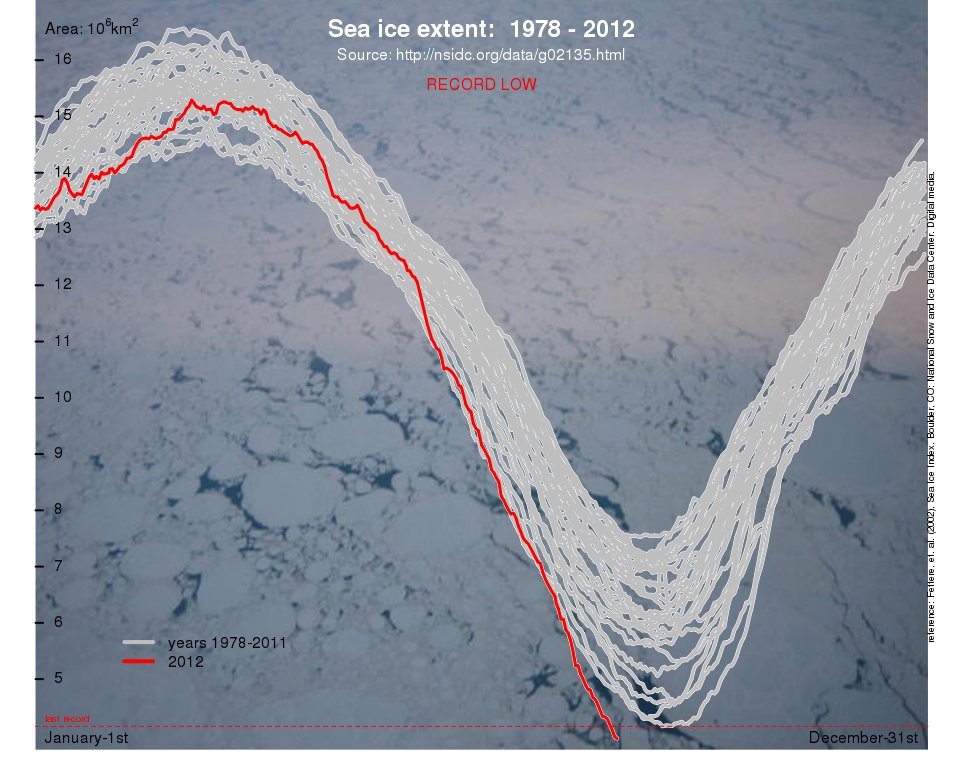Arctic Sea Ice Extent: We're gonna need a bigger graph
Posted on 1 September 2012 by Daniel Bailey
It's happened to all of us.
Whether as a child on the school playground missing the call to come back in from recess or later, as teenagers, forgetting to return a library book until it was overdue or as adults realizing with a start that it's the day after taxes were due and we haven't done a thing, we've all wakened from a walking sleep to realize something we've just been missing all along.
For the mainstream media and the average person in general, that thing is the ongoing demise of the Arctic sea ice cover. And nothing puts facts, especially record-breaking facts, into perspective like a visual aid. Consider this visual aid provided from RealClimate of the NSIDC Arctic Sea Ice Extent:
[Source]
Virtually every sea ice metric there is shows a record-breaking loss of the Arctic sea ice "cap" in 2012. With Arctic sea ice dropping off the bottom of existing sea ice graphs, the noted sage Chief Brody might put it this way:
"We're gonna need a bigger graph"
SkS participant andylee has contributed this Youtube video, showing PIOMAS Arctic sea ice volumes:































 Arguments
Arguments
























 0
0  0
0






Comments